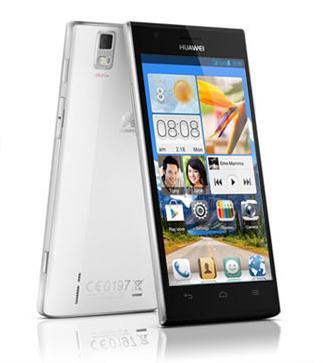
It's now been a little over a year since Huawei introduced us to the Ascend P1/P1S, and in the smartphone world, that typically means that it's time for a refresh. That's precisely what we've been given today in the Huawei Ascend P2, a new high-end smartphone running Android 4.1. The Ascend P2 features a 4.7-inch 1280x720 IPS display (with Gorilla Glass) on its face along with a 1.3-megapixel shooter, a 13-megapixel camera around back and a dedicated camera button on the side. Huawei is touting the P2 as "the world's fastest 4G LTE smartphone" thanks to its support of LTE Category 4, which allows for download speeds of up to 150Mbps.
Inside the Ascend P2's 8.4mm-thick body is a 1.5GHz quad-core processor, 16GB storage, 1GB RAM, NFC and a 2,420mAh battery. Speaking of its battery, Huawei says that the P2 features power-saving tech that will reduce battery consumption and cut charging time by 25 percent when compared to other smartphones. Just like the Ascend Mate and Ascend D2 before it, the new Ascend P2 is running Android Jelly Bean beneath a custom Huawei overlay known as the Emotion UI.
Looking at its face, the Ascend P2 sports a design that's fairly similar to its predecessor that debuted last year. The Ascend P2's spec sheet is obviously much more up-to-date, and while some of the P2's features aren't quite as high-end as some of the other flagship Android phones that've been introduced recently, it should be able to handle most of what's thrown at it. We'll have to wait until we can try the P2 out for ourselves before making any final judgments on its performance, though.
The Ascend P2 will be offered in both black and white with a price tag of €399. Huawei says the device's global launch will kick off "around the second quarter of 2013," with French carrier Orange set to offer the P2 in June. There's no word yet on U.S.-specific availability. The Ascend P1 was never offered by a carrier here, but it was eventually offered by online retailers, and that'll likely be the case for the Ascend P2 if it isn't picked up by a operator in the U.S.
Via Huawei